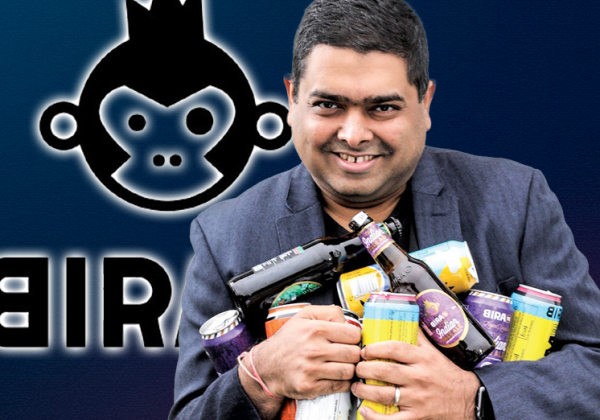Patanjali Marketing Strategy
Patanjali Marketing Strategy: Simplified and Straightforward
Patanjali is one of the biggest success stories in India’s FMCG (Fast Moving Consumer Goods) market. The brand isn’t just about selling products; it’s a movement that connects to the core of Indian values. From being a startup to becoming a household name, Patanjali’s marketing strategy stands out because it blends traditional wisdom, affordability, and modern branding techniques. Below, let’s break down their strategy in simple and relatable terms.
1. Focus on Indian Identity and Values
The foundation of Patanjali’s marketing strategy is its strong connection to Indian culture, Ayurveda, and natural living. Patanjali positions itself as a "Swadeshi" (Indian-made) brand that taps into the pride of being Indian. At a time when consumers are becoming more conscious about supporting local brands, Patanjali resonates deeply with its audience.
How They Use This Strategy:
- Their messaging is all about promoting "Made in India" products.
- They emphasize that their products are rooted in Ayurvedic science, a treasure of Indian heritage.
- By advocating natural and chemical-free products, they align with the growing demand for sustainable and holistic wellness solutions.
This makes consumers feel they are not just buying a product but contributing to a larger cause—supporting Indian traditions and self-reliance.
2. Affordability for the Masses
Patanjali’s pricing strategy is a game-changer. Unlike many premium FMCG brands that focus on middle and upper-class consumers, Patanjali offers quality products at affordable prices, making them accessible to everyone, including rural and low-income segments.
Why This Works:
- India has a massive population that prefers value-for-money products. Patanjali taps into this mindset by pricing its products lower than most competitors.
- By offering affordability, they’ve penetrated rural markets, where cost is a big deciding factor.
For example, Patanjali’s toothpaste, “Dant Kanti,” is priced significantly lower than other popular toothpaste brands while promoting natural ingredients. This pricing model has helped them capture market share quickly.
3. Leveraging Baba Ramdev’s Brand Power
Baba Ramdev, the face of Patanjali, is more than just a yoga guru—he’s a trusted figure for millions of Indians. Patanjali uses his reputation as the cornerstone of its marketing. People see Baba Ramdev as someone who promotes health, wellness, and a natural way of living. This trust automatically extends to the brand.
How This Works:
- Baba Ramdev appears in almost all Patanjali ads, making the brand feel personal and authentic.
- His yoga camps and public appearances serve as indirect marketing for Patanjali. He talks about the benefits of natural products and often recommends Patanjali as the solution.
- His credibility as a health expert builds trust in the brand, especially for Ayurvedic and herbal products.
4. Wide Product Range
Patanjali’s product range is massive, covering everything from personal care (toothpaste, shampoos, soaps) to food items (ghee, honey, noodles) to healthcare products (Ayurvedic supplements). This wide range ensures that they can cater to almost every household need.
Why This Matters:
- Consumers often prefer buying multiple products from one trusted brand.
- A wide range helps Patanjali target different customer groups, from fitness enthusiasts to homemakers.
- It allows them to compete with multiple companies across sectors—FMCG giants like Colgate, Dabur, and Nestlé.
This variety also ensures that consumers see Patanjali everywhere, whether it’s in a grocery store, a pharmacy, or even a mall.
5. Distribution Network That Reaches Everywhere
Patanjali’s distribution strategy is one of its strongest pillars. They’ve set up their own dedicated retail outlets (Patanjali stores) while also leveraging general trade to ensure their products are available everywhere.
How They Achieve This:
- Patanjali products are sold in over 47,000 exclusive outlets, making it easier for consumers to find their items.
- They’ve partnered with local kirana stores and supermarkets, ensuring a wide reach even in remote areas.
- Their online presence has also grown significantly, with Patanjali products now available on e-commerce platforms like Amazon and Flipkart.
This mix of dedicated stores, local retailers, and online platforms ensures that their products are accessible to everyone, whether they’re in a big city or a small village.
6. Minimal Advertising, Maximum Impact
Patanjali spends relatively less on traditional advertising compared to its competitors. Instead, it relies heavily on word-of-mouth marketing, brand loyalty, and Baba Ramdev’s influence.
Their Advertising Tactics:
- TV ads and print campaigns focus on the benefits of natural and Ayurvedic products.
- They use simple, straightforward messaging that highlights the affordability, Indian roots, and health benefits of their products.
- Instead of flashy celebrity endorsements, they use Baba Ramdev as the trusted face of the brand.
This minimal advertising approach not only saves costs but also makes the brand feel more grounded and authentic.
7. Health and Wellness Trend
Patanjali has perfectly timed its growth with the global rise in health and wellness awareness. More people are now choosing natural, organic, and Ayurvedic products over chemical-based ones, and Patanjali positions itself as the go-to brand for this shift.
How They Leverage This Trend:
- Their products highlight the absence of harmful chemicals, preservatives, or artificial ingredients.
- They promote the idea that switching to Patanjali products is not just better for you, but also better for the environment.
- Health-focused campaigns target consumers looking for natural solutions to everyday problems, like hair fall or digestion issues.
8. Partnerships and Retail Collaborations
To strengthen its presence, Patanjali has partnered with various retailers and online platforms. These collaborations ensure that the brand reaches more customers and grows its market share.
Examples:
- Partnerships with major supermarkets and e-commerce platforms allow Patanjali to target urban customers.
- Collaborating with smaller retailers helps them maintain their dominance in rural markets.
- Their exclusive Patanjali stores double as marketing hubs where customers can learn about their products.
9. Emotional Appeal and Trust Building
Patanjali’s marketing connects with people on an emotional level. They position themselves as a brand that’s not just selling products, but also reviving Indian culture, improving health, and promoting sustainability.
Key Messages:
- Supporting Patanjali is like supporting the Indian economy.
- Using Patanjali products is a step toward a healthier, natural lifestyle.
- The brand stands for ethical practices, sustainable development, and national pride.
This emotional connection creates strong customer loyalty.
10. Constant Innovation
To stay ahead of the competition, Patanjali continuously introduces new products and adapts to consumer demands. Whether it’s entering the packaged foods market with noodles or launching immunity boosters during the pandemic, they’re quick to identify trends.
How This Helps:
- It keeps the brand relevant and top-of-mind for consumers.
- By offering something new, they attract both new customers and retain old ones.
Conclusion
Patanjali’s marketing strategy is a mix of cultural pride, affordability, authenticity, and smart distribution. They’ve successfully carved out a unique space in the market by connecting deeply with their audience and focusing on quality at a lower price point. It’s not just about selling products—it’s about promoting a lifestyle that aligns with Indian traditions and modern consumer demands. By sticking to these principles and innovating when needed, Patanjali has become a powerhouse in India’s FMCG sector, and its influence is only growing stronger.
Popular Posts

Best Website Development Technology
PHP is often regarded as one of the best technologies for website development due to its flexibil [...]

Bira 91 Markeing Strategy- First Craft Beer of India
Beer enthusiasts are well aware of the wide range of options available, whether they're at a bar [...]

Domino's Marketing Strategies, The Ultimate Journey
Domino's Marketing Strategy: The Recipe for Global Success
Domino's h [...]




